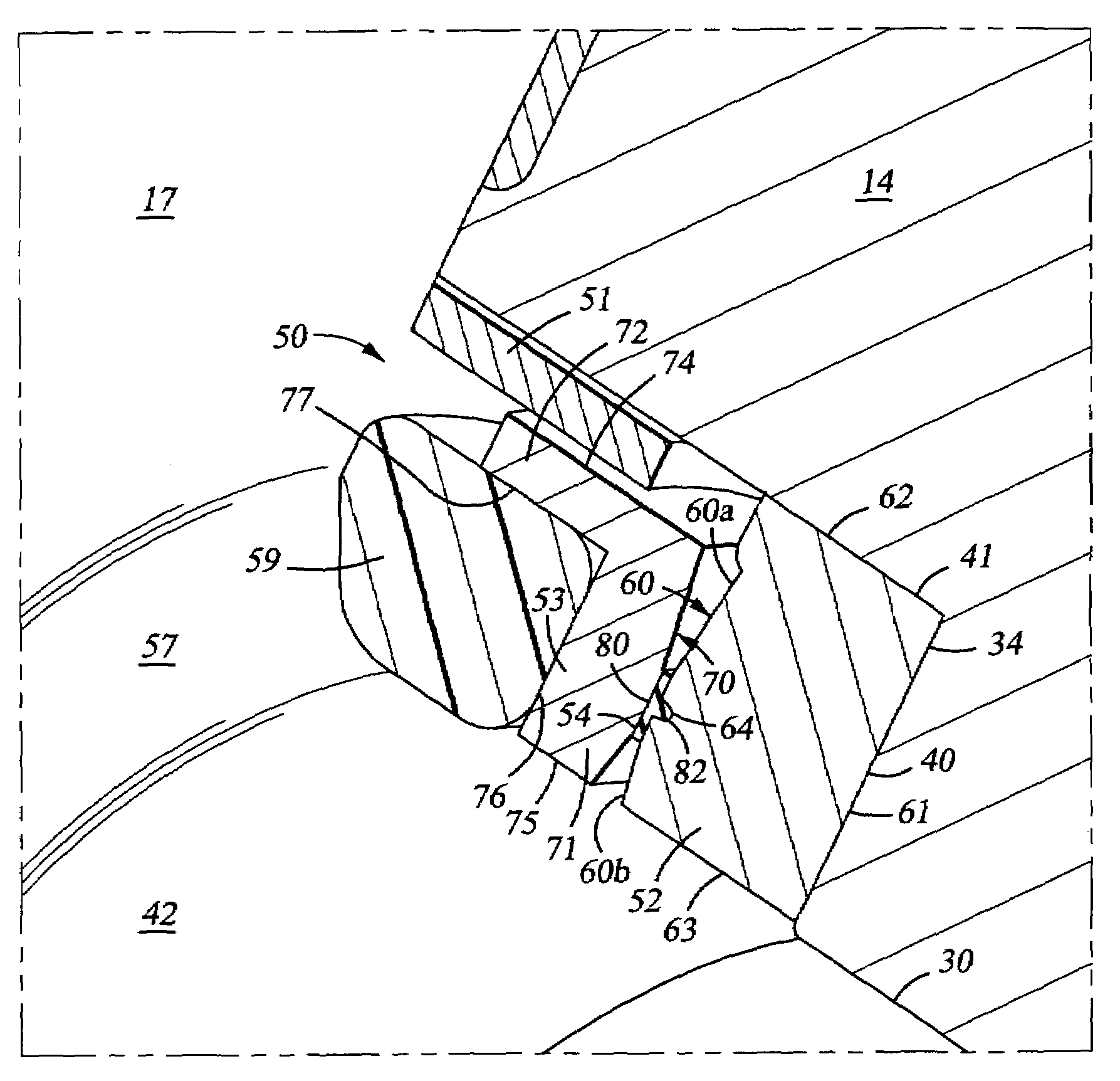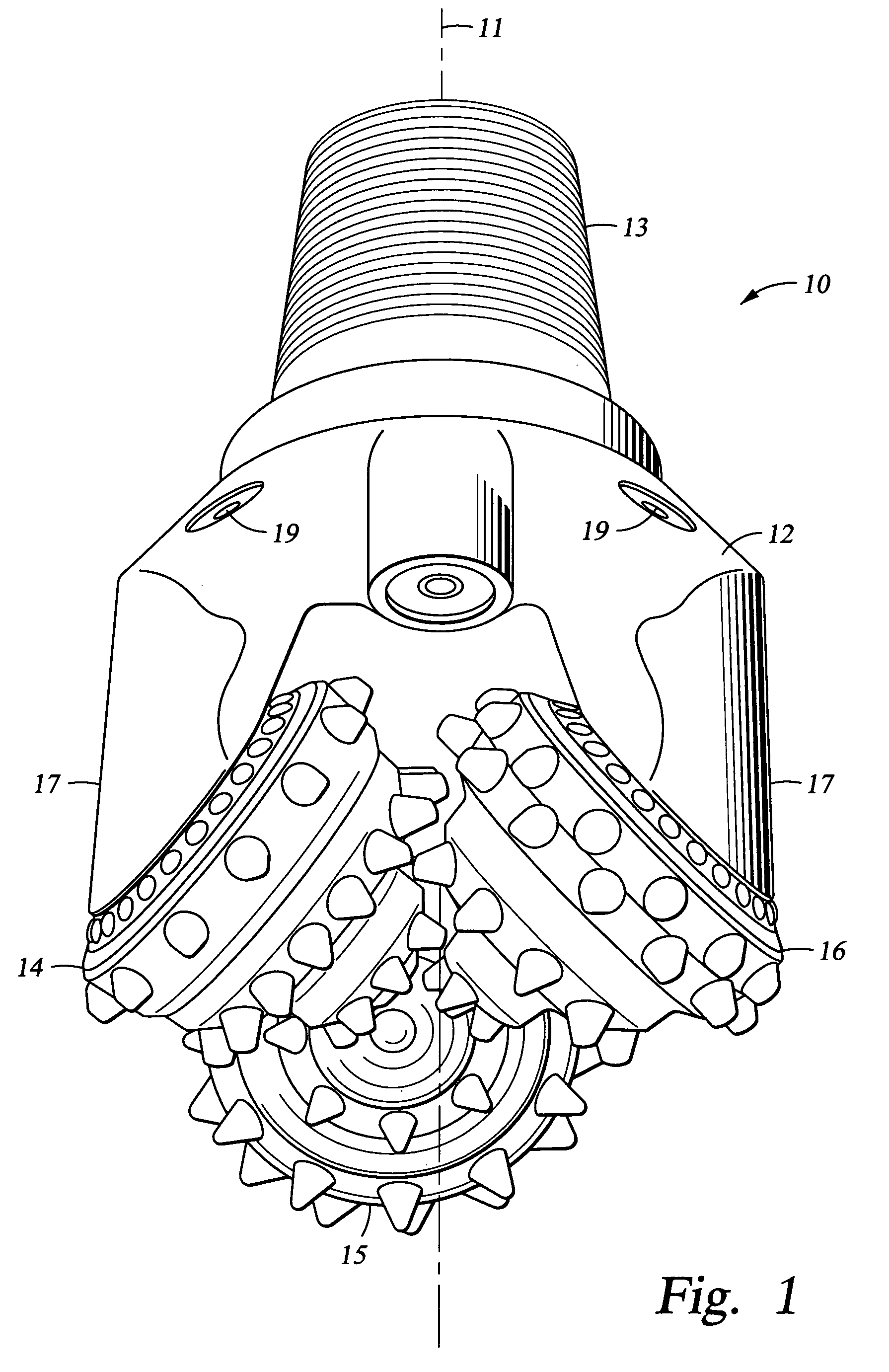Dynamic seal with soft interface
a technology of dynamic sealing and soft interface, which is applied in the direction of engine components, mechanical equipment, cutting machines, etc., can solve the problems of essentially losing the time required to make a round trip for replacing a bit, affecting and affecting the sealing performance. , to achieve the effect of improving the life of the bi
- Summary
- Abstract
- Description
- Claims
- Application Information
AI Technical Summary
Benefits of technology
Problems solved by technology
Method used
Image
Examples
Embodiment Construction
[0019]Described herein is a seal assembly for dynamically sealing between rotatable members, such as a rolling cone of a rock bit. One preferred seal assembly includes a first relatively soft but non elastomeric seal ring. The assembly further includes a second seal ring having a facing surface engaging the first seal ring as the two members rotate with respect to one another. The facing surface of the second seal ring is made of a material much harder than the first material, preferably, a material that is at least two or more times harder than the material of the first seal ring. In certain embodiments, the first seal ring is metallic, such as a ring made from tin, copper, aluminum, magnesium, lead and alloys thereof. The relatively soft seal ring may also be made of non metallic materials such as nylon-zytel, acetal and polypropylene. Preferred materials for the facing surface of the second seal ring include hardened steel and tungsten carbide. In certain embodiments, the seal as...
PUM
| Property | Measurement | Unit |
|---|---|---|
| diameter | aaaaa | aaaaa |
| hardness | aaaaa | aaaaa |
| resilient | aaaaa | aaaaa |
Abstract
Description
Claims
Application Information
 Login to View More
Login to View More - R&D
- Intellectual Property
- Life Sciences
- Materials
- Tech Scout
- Unparalleled Data Quality
- Higher Quality Content
- 60% Fewer Hallucinations
Browse by: Latest US Patents, China's latest patents, Technical Efficacy Thesaurus, Application Domain, Technology Topic, Popular Technical Reports.
© 2025 PatSnap. All rights reserved.Legal|Privacy policy|Modern Slavery Act Transparency Statement|Sitemap|About US| Contact US: help@patsnap.com



